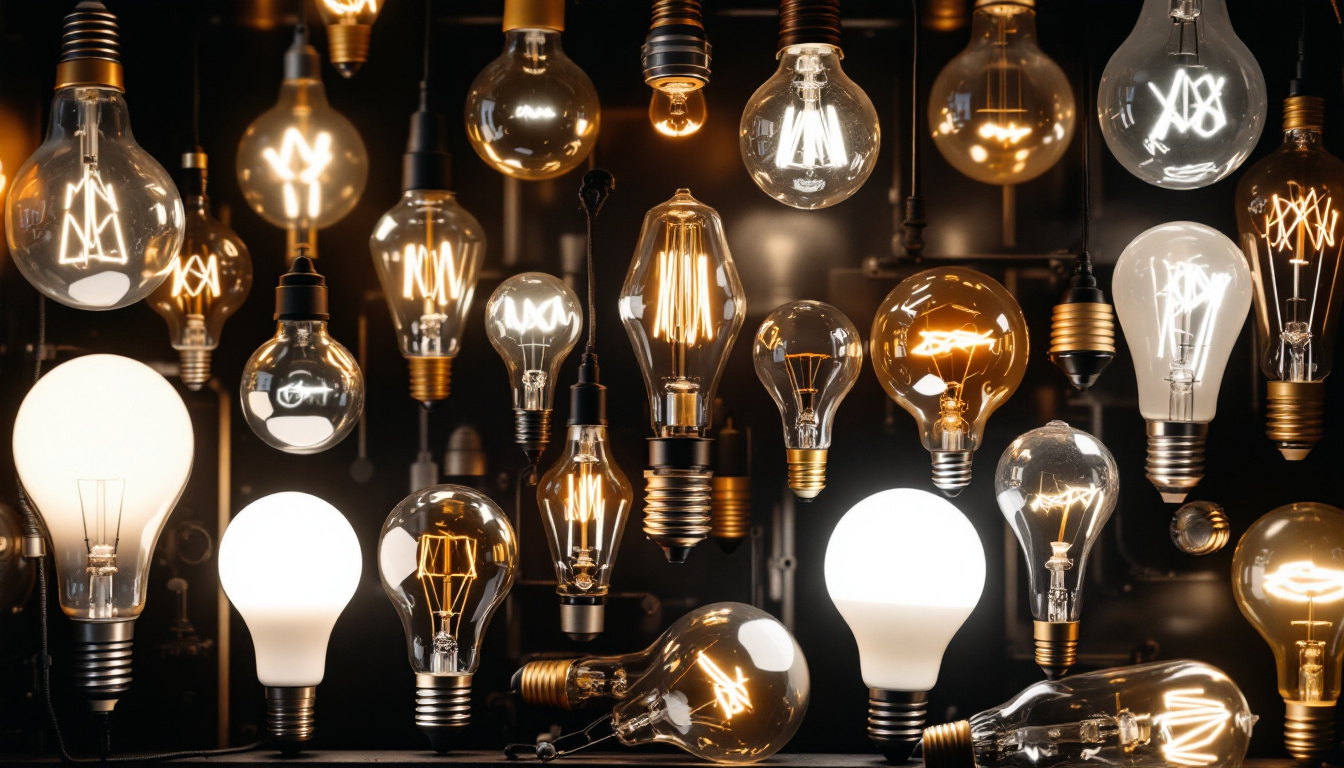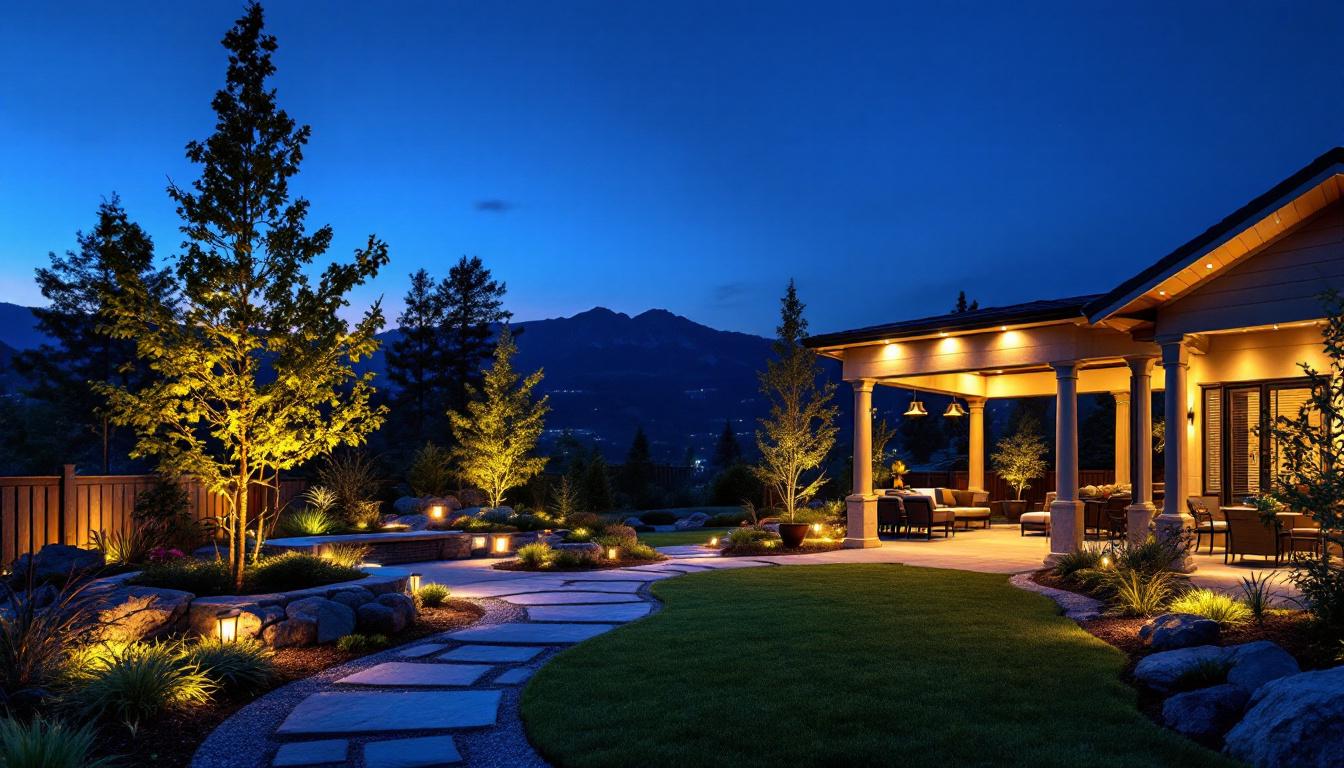
The lighting industry has undergone a remarkable transformation over the years, driven by technological advancements and changing consumer preferences. From the humble beginnings of incandescent bulbs to the sophisticated LED technology of today, the evolution of light bulb types has not only improved energy efficiency but also enhanced the quality of light available for various applications. This article delves into the different types of light bulbs, their historical significance, and the future trends shaping the industry.
The journey of artificial lighting began with the invention of the incandescent bulb. This simple yet revolutionary device utilized a filament heated to produce light, marking a significant milestone in the quest for illumination. The incandescent bulb became synonymous with home lighting, offering a warm glow that many still cherish today. Its introduction transformed not just homes, but entire cities, as streets and public spaces began to bask in the glow of electric light, extending the hours of activity and fundamentally altering social dynamics.
Incandescent bulbs are characterized by their simple design and warm color temperature, which creates a cozy atmosphere. They are widely recognized for their ability to render colors accurately, making them a popular choice for residential lighting. However, despite their aesthetic appeal, incandescent bulbs are notoriously inefficient, converting only a small fraction of energy into visible light. This inefficiency is largely due to the fact that a significant portion of the energy consumed is lost as heat, which not only raises energy costs but also contributes to environmental concerns as energy consumption continues to rise globally.
As the demand for energy-efficient solutions grew, the limitations of incandescent bulbs became increasingly apparent. Their short lifespan and high energy consumption led to a search for alternatives. This quest for better lighting solutions paved the way for the development of various new technologies, each with its own advantages and disadvantages. For instance, fluorescent lights emerged as a more energy-efficient option, providing longer life spans and reduced energy costs, yet they introduced their own set of challenges, including flickering and a cooler color temperature that some found uninviting. Additionally, the advent of compact fluorescent lamps (CFLs) and light-emitting diodes (LEDs) further revolutionized the lighting industry, offering even greater efficiencies and lifespans, while also sparking discussions about the environmental impact of manufacturing and disposal of these newer technologies.
Fluorescent lighting emerged as a more energy-efficient alternative to incandescent bulbs. Utilizing a gas-filled tube and a phosphor coating, fluorescent bulbs produce light when an electric current excites the gas. This technology allowed for longer-lasting bulbs that consumed significantly less energy. The efficiency of fluorescent lighting not only reduced electricity bills for consumers but also contributed to a decrease in overall energy demand, which was particularly beneficial during times of energy crises in the late 20th century. As awareness of environmental issues grew, the shift towards fluorescent lighting became a crucial step in promoting sustainable energy practices.
Compact fluorescent lamps (CFLs) took the fluorescent concept further by miniaturizing the design, making it suitable for standard light fixtures. CFLs became popular for both residential and commercial applications due to their energy-saving capabilities and longer lifespan compared to traditional incandescent bulbs. Their introduction marked a significant change in consumer behavior, as many households began to replace their incandescent bulbs with CFLs, leading to a noticeable reduction in energy consumption. Moreover, the variety of shapes and sizes available allowed CFLs to fit seamlessly into various lighting designs, making them an attractive option for modern interiors.
Despite their advantages, CFLs are not without drawbacks. The presence of mercury in these bulbs poses environmental concerns, requiring careful disposal. Additionally, CFLs often take time to warm up, providing less immediate brightness than their incandescent counterparts. These limitations sparked further innovation in the lighting industry. As a response, manufacturers began to explore alternative technologies, leading to the development of LED lighting, which offered even greater efficiency and eliminated the need for hazardous materials. The evolution of lighting technology continues to influence how we illuminate our spaces, pushing the boundaries of energy efficiency and sustainability while addressing consumer needs for convenience and safety.
The introduction of light-emitting diodes (LEDs) revolutionized the lighting landscape. LEDs are semiconductor devices that emit light when an electric current passes through them. Their efficiency, longevity, and versatility have made them the preferred choice for a wide range of applications.
One of the most significant advantages of LED technology is its energy efficiency. LEDs consume a fraction of the energy required by incandescent and fluorescent bulbs, resulting in substantial cost savings for consumers and businesses alike. Additionally, LEDs have an impressive lifespan, often lasting tens of thousands of hours, which reduces the frequency of replacements.
LEDs offer a broad spectrum of color temperatures, allowing for customizable lighting solutions that can enhance any space. Unlike CFLs, LEDs provide instant brightness and can be easily dimmed, making them suitable for various settings, from residential homes to commercial spaces. Their ability to render colors accurately further enhances their appeal.
The evolution of light bulbs has not only focused on energy efficiency but also on integrating technology into lighting solutions. Smart lighting systems have emerged, allowing users to control their lighting through smartphones or voice-activated devices.
Smart bulbs can be programmed to adjust brightness, color, and even turn on or off at specific times. This level of control offers convenience and energy savings, as users can tailor their lighting to their daily routines. The integration of smart lighting into home automation systems has made it easier for homeowners to create the perfect ambiance for any occasion.
As technology continues to advance, the potential for smart lighting solutions is vast. Innovations such as adaptive lighting, which adjusts based on the time of day or occupancy, are becoming more common. Additionally, the integration of sensors and IoT technology allows for more efficient energy management, further enhancing the sustainability of lighting systems.
In addition to general lighting, the industry has seen the development of specialized lighting solutions tailored to specific applications. These innovations cater to the unique needs of various sectors, including healthcare, agriculture, and entertainment.
In healthcare settings, the quality of lighting can significantly impact patient outcomes. Specialized lighting solutions that mimic natural daylight have been developed to improve mood and promote healing. These systems can be adjusted to create different environments, aiding in patient recovery and staff productivity.
In the agricultural sector, LED lighting has transformed indoor farming practices. Grow lights designed to emit specific wavelengths of light can enhance plant growth and yield. This technology allows for year-round cultivation, reducing reliance on seasonal changes and improving food security.
As awareness of environmental issues grows, the lighting industry is increasingly focused on sustainability. The shift towards energy-efficient lighting solutions is a crucial step in reducing carbon footprints and conserving resources.
With the rise of LED technology, the need for proper recycling and disposal methods has become paramount. Many manufacturers are developing programs to ensure that old bulbs, particularly CFLs, are disposed of responsibly. This focus on sustainability not only benefits the environment but also aligns with the values of eco-conscious consumers.
Governments and organizations worldwide are implementing regulations and standards to promote energy-efficient lighting solutions. These initiatives encourage manufacturers to innovate and produce products that meet specific energy performance criteria, further driving the evolution of the lighting industry.
As the lighting industry continues to evolve, several trends are shaping its future. The integration of advanced technologies, a focus on sustainability, and the increasing demand for personalized lighting solutions are driving innovation.
Human-centric lighting is an emerging concept that emphasizes the impact of light on human well-being. This approach considers the biological effects of light on mood, sleep, and overall health. As research in this area expands, lighting solutions designed to support human health and productivity are likely to become more prevalent.
Control systems for lighting are becoming more sophisticated, allowing for seamless integration with other building systems. The use of artificial intelligence and machine learning can optimize lighting based on occupancy patterns and energy usage, enhancing efficiency and user experience.
The evolution of light bulb types has significantly shaped the lighting industry, reflecting advancements in technology and changing consumer needs. From the incandescent bulb’s warm glow to the energy-efficient and versatile LED solutions of today, each innovation has contributed to a more sustainable and effective lighting landscape. As the industry continues to evolve, the focus on energy efficiency, smart technology, and human-centric design will drive future developments, ensuring that lighting remains an essential aspect of our daily lives.
For lighting contractors, staying informed about these trends and advancements is crucial. Understanding the various types of lighting solutions available and their applications can help contractors provide better service to clients, ensuring that they meet both functional and aesthetic needs. Embracing the evolution in lighting technology will not only enhance project outcomes but also contribute to a more sustainable future.
As you embrace the dynamic evolution of the lighting industry, partner with LumenWholesale to ensure your projects shine with the best in energy efficiency, smart technology, and quality. Our commitment to providing contractors with top-tier, spec-grade lighting products at unbeatable wholesale prices means you can equip your projects with the latest innovations without breaking the bank. With our extensive selection that meets the highest industry standards, free shipping on bulk orders, and no middleman markups, you’re guaranteed to find the perfect lighting solutions for any application. Elevate your lighting game and discover wholesale lighting at the best value today.

Discover the pitfalls of purchasing architectural round pendant lights in bulk from local distributors.

Discover why LED backyard lights are essential in lighting installations, offering energy efficiency, durability, and enhanced outdoor ambiance—transform your space today!.

Discover the essential best practices for using occupancy sensors in lighting projects with our comprehensive guide tailored for contractors.

Discover how LED dimmable switches can revolutionize the workflow of lighting contractors by enhancing efficiency and reducing costs.